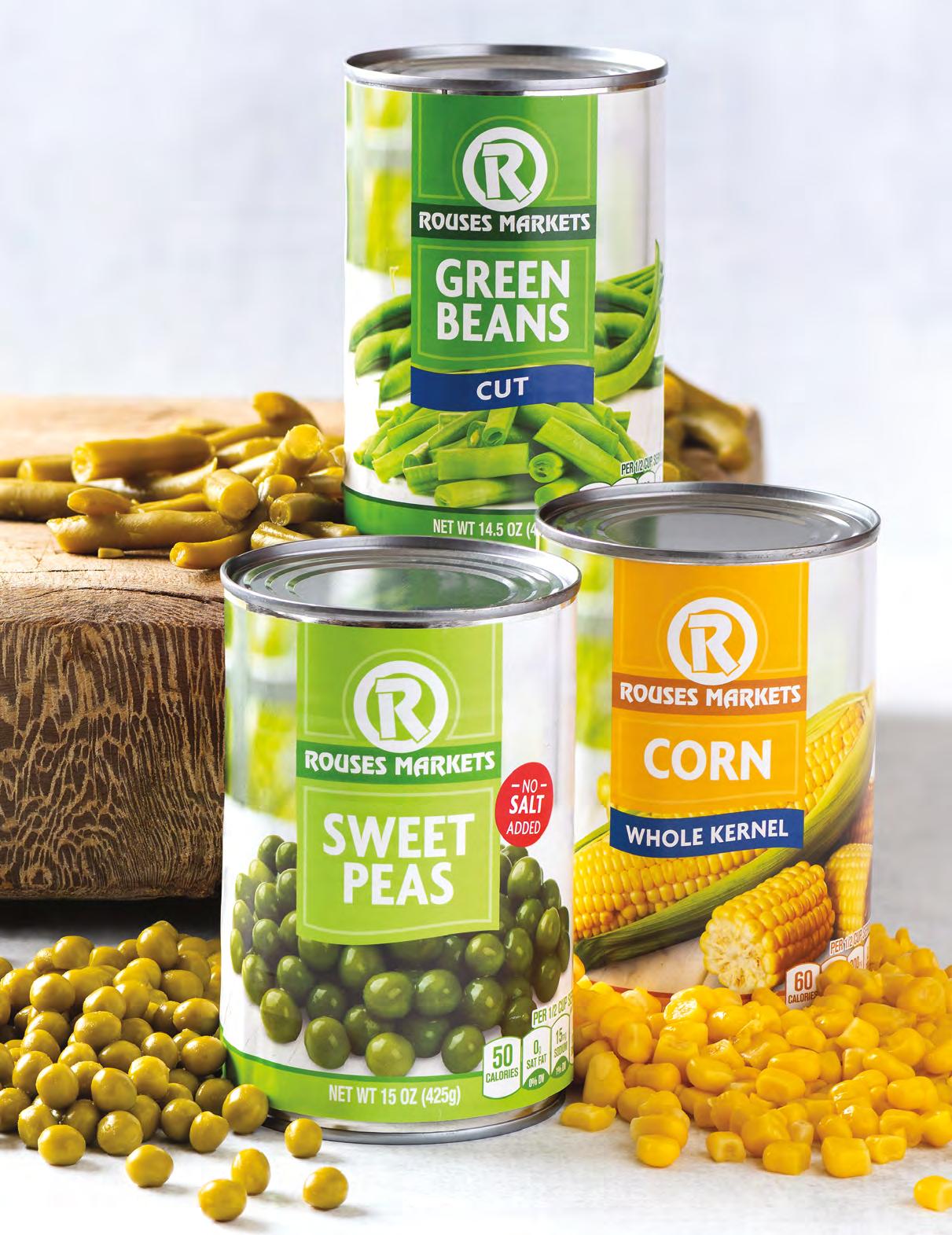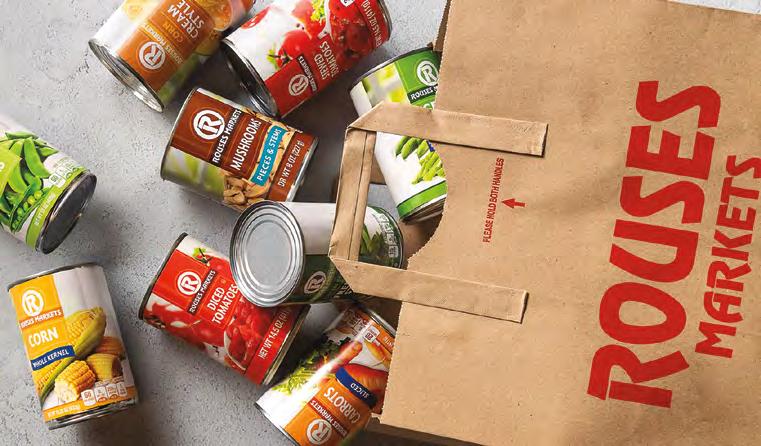
7 minute read
A Fan of the Can
By David W. Brown
My grandmother lived in Convent, Louisiana, in a small house with tree out front. She hated that tree. It was (and remains) giant and ancient, and she was ever certain that it was one gust of wind away from falling, and not just anywhere, but directly on her house. It would probably happen during a hurricane or tornado, but that wasn’t strictly a requirement. She died when I was 27, which means I heard about that tree for 27 years. It would definitely be her undoing. Fifteen years after her death, the tree remains standing tall, as does the little shotgun house. I am fully convinced that the tree will survive the heat death of the universe.
Memories are hazy, mutable things. I remember the smell of her house with uncanny precision. I remember the way the floor felt beneath my feet when walking. It was an elevated shotgun, like every house in the area because of possible floods, and when you walked, you could feel the lack of concrete beneath your feet. A stomp could resonate from front door to back. I remember at night her locking the door so that the “looloo” wouldn’t get us. (Accent on the second “loo,” and in retrospect she had to be saying the French le loup, “the wolf”—though I prefer to remember it as the dreaded phantom looloo.)
She really was a great cook. I feel like that needs emphasis because, despite her extraordinary culinary talents, the foods I remember most from childhood days spent at the house with the dreaded tree—those I most closely relate with her memory—are cans of mixed vegetables, jars of pickles and frozen chocolate eclairs. (All store-bought.) I cannot overstate here how excellent a cook she was. She made the most extraordinary lemon meringue pie from scratch. You could hand the woman a live hen at noon and have fried chicken by dinner.
But for whatever reason, the first food my mind goes to are those mixed vegetables. They were cooked in a pot on an old gas stove that I sometimes got to help with the pilot light (I got to strike the matches), and after being heated, were transferred onto a white ceramic plate. Then—and I suspect this was the true motivation for my love of this particular cuisine—I would pour onto it absurd amounts—yea, a veritable sea—of Wish-Bone Italian Dressing. (I believe at some point there might have been a brief infatuation with French dressing, perhaps during a rebellious period in my youth.)
These days, I most often encounter canned vegetables—mixed or otherwise—at holidays and family gatherings. Green bean casserole was likely invented on a dare to see how many different cans of varying foods you could dump into a dish and still have it taste good. (Has anyone ever actually eaten a can of mushroom soup on its own? Even the soup would wonder what you were doing.) Baked beans at outdoor barbecues, canned cranberry sauce at Christmas (note that I couldn’t remember what that jiggly abomination is called and had to google “gross canned purple stuff”—of course it was the first result).
You might not think often of canned goods overall, but they shaped the world in which we live. Like many technology breakthroughs, this one started because of war. “An army marches on its stomach,” said Napoleon Bonaparte, and empty battlefield stomachs were a huge problem for him. L’Empereur had a continent to conquer but was limited by the ability to feed his soldiers. During the warm seasons, they could march, hunt and farm uninterrupted, but in the fall and winter, all progress ground to a halt. The French government established a prize to be awarded to the first inventor who could successfully preserve food in bulk.
Enter a baker and chef named Nicholas Appert (who, in an unrelated note—one hopes—helped behead Louis VXI during the French Revolution). Appert began toying with ways of preserving massive amounts of food in airtight containers. He knew that bottling food in glass jars stopped with cork, sealed with wax, and then boiled, somehow prevented spoilage. (Louis Pasteur was not yet born, though would later prove that heat kills bacteria.) Appert developed a method to do with in bulk, and when tested, he saw that jam, soups, syrups and vegetables just kept on keeping on so long as that glass jar remained unopened. (Appert wasn’t the first person to notice this phenomenon, but he was the first to figure out how to industrialize the process and bring safe, plentiful, reliably safe food to the masses.)
Canned food, though eventually a great enabler of war, didn’t quote roll out in time to help Napoleon conquer all of Europe.

It wasn’t the process that was the problem, but rather the inability to transport so much food for such vast distances. (Long haul trucking was just over a century away.) Bonaparte can’t pin his eventual defeat entirely on all this, of course; the Battle of Waterloo was fought in June.
At some point in the last twenty years, canned vegetables became second class citizens. I get it. In this healthy and enlightened world, we all have organic vegetable gardens in the backyard that we lovingly tend to, naming each individual carrot and Instagramming our favorite bell peppers, but sometimes—bear with me here—sometimes after a long day of yoga, meditation, Peloton riding and matcha lattes, you’re just too tired to harvest your corn and prepare it for dinner. Sometimes the kids won’t know the difference between the fresh stuff and corn from a can.
But is it… unhealthy?
Nope! Here is the deal with canned vegetables. They likely have slightly less nutritional value than frozen vegetables, which in turn have less nutrition than the ones fresh from the farm. But speaking for myself as I emerge from quarantine, look in the mirror and frantically research that surgery where they staple your stomach shut, I realize that too many canned vegetables weren’t my problem—that if only I had put the Del Monte back on the shelf and grabbed the carrots from the produce section I would have washboard abs and zero percent body fat.
No, I think in retrospect it was all the wine and ice cream.
Herein is a defense of the lowly canned vegetable. First, you’re not eating enough vegetables. I mean, it’s not even close. And you’re not alone: according to the Centers of Disease Control, only one in 10 people do. (The rest of you probably have doughnuts in each hand as you read this. I do, anyway.) Such a nutritional deficiency means more diabetes and heart disease. Second, canned vegetables, though less nutritious than freshly harvested vegetables, are still nutritious. Calling them unhealthy is like saying it’s unhealthy to only run four miles when you could have run five. The canning process is surprisingly fast: only hours elapse between a green bean being pulled from the stem to being sealed in a can. They are processed, yes—a little higher in sodium, and sometimes sugar—but you can find low-sodium and no-sugaradded varieties of just about everything.
And that sodium? That terrifying tree-inthe-front-yard sodium? Here’s a fun fact: If you are regularly eating canned vegetables, they still only account for one percent of your daily sodium intake. Two percent of sugar. Are you really going to pin your body issues on a defenseless can of vegetables? Just to reiterate here, a vegetable with slightly higher levels of sodium is still a vegetable, which, again, you aren’t eating enough of. And those vegetables in a can have identical fiber content to fresh vegetables. It won’t surprise you to learn that you aren’t getting enough fiber, either.
Third: Half the fresh vegetables in your fridge or on your counter have already gone bad. (Who are you kidding here?) The stuff in the can, meanwhile, will last years. When the atomic bombs fall and we’re all scouring the countryside, that pile of goo in your house that used to be a tomato won’t do anyone any good. The canned diced tomatoes in the cupboard, though? C’est très gourmet! And though, by condescending to eat the lowly canned vegetable, we will live longer by cutting our rates of heart disease and diabetes, in the end, canned vegetables will outlive everything. Well, not everything. The one thing that will last longer is the tree in my grandmother’s front yard. It’s not going anywhere. Guarded from afar by the looloo.











